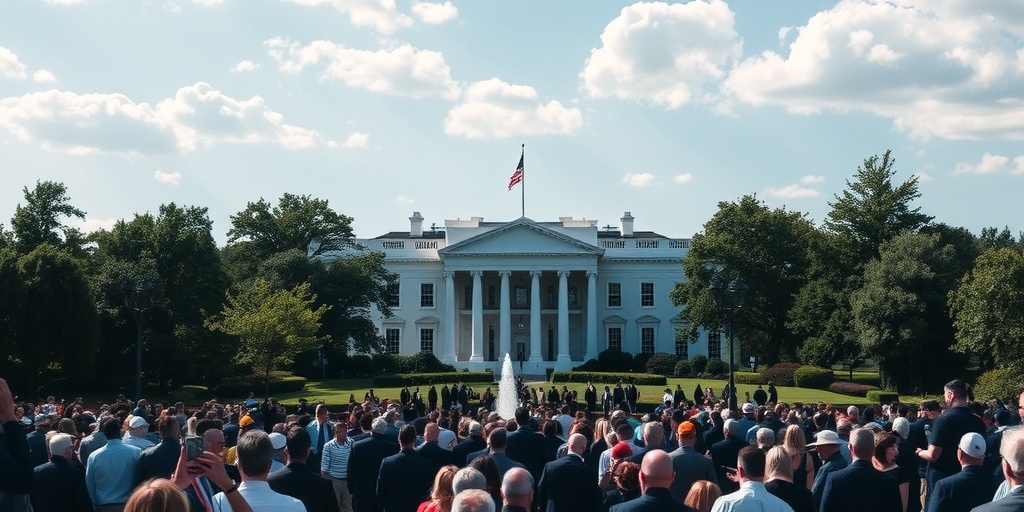Now Reading: Strong Labor Market Bolsters Fed’s Decision to Maintain Rate Pause
-
01
Strong Labor Market Bolsters Fed’s Decision to Maintain Rate Pause
Strong Labor Market Bolsters Fed’s Decision to Maintain Rate Pause
Federal Reserve’s Confidence in Labor Market Signals Pause on Rate Cuts
In a notable shift within a span of just six months, Federal Reserve officials have transitioned from expressing deep concerns about the labor market to demonstrating a newfound confidence in its strength and stability. Only a little while ago, Fed policymakers were apprehensive as monthly job growth slowed down and the unemployment rate began to edge higher. In response to these unsettling trends, the central bank made the unusual decision to cut interest rates in a larger-than-usual move, hoping to bolster the economy.
Currently, however, this cautious perspective has given way to an optimistic outlook. Various indicators show a robust labor market, leading officials to feel secure enough to maintain interest rates at their current levels for an extended period. The latest assessments suggest a strategic and measured approach from the Fed as it awaits clearer signals of easing inflationary pressures before considering any further rate reductions.
“The jobs data just aren’t calling for lower rates right now,” remarked Jon Faust, an economist at Johns Hopkins University, who also previously served as a senior adviser to Fed Chair Jerome Powell. Faust emphasized that unless there were significant disruptions in the labor market, any moves from the Fed would be focused on observing progress in inflation.
Analyses of the current labor market unveil a picture of stability despite signs of cooling. Job growth continues at a solid pace, and the unemployment rate remains relatively steady at around 4.1 percent – a minor uptick occurring over the summer months. Furthermore, the number of individuals filing for unemployment benefits is low, suggesting that workers are successfully finding jobs, and employers are capable of hiring qualified candidates.
Mary C. Daly, the president of the San Francisco Fed, echoed this sentiment in a recent interview, stating, “I don’t see any signs right now of weakening.” Likewise, Thomas Barkin, president of the Richmond Fed, characterized the overall economy as "solid but not overheating."
The amalgamation of these conditions, alongside rapidly changing economic policies instituted during the Trump administration, has strengthened the case for the Fed to pause its rate cuts. Consensus among economists suggests that the central bank will likely implement two rate cuts by the end of the year, totaling a half-percentage point; however, this estimate is subject to fluctuation, with confidence in such predictions wavering in recent weeks.
Adding complexity to this landscape, opinions about inflationary pressures diverge. Some analysts are cautious, fearing that renewed inflation may arise due to the implementation of tariffs, among other factors. Others, however, caution that the labor market may not be as robust as it appears on the surface.
Neil Dutta, the head of economics at Renaissance Macro Research, warned against complacency, suggesting that when the Fed asserts it has plenty of time to act, it may not be accurate. One area of concern among economists is the hiring rate, which has remained subdued. In addition, the share of unemployed individuals who have been jobless for six months or longer has been on the rise since summer.
Economists are also forecasting a potential increase in layoffs. Samuel Tombs, chief U.S. economist at Pantheon Macroeconomics, estimates a 5 percent rise in layoffs from the previous December, based on data tracking large-scale layoffs in companies employing over 100 workers. Most consensus indicates that these developments do not currently present a crisis but do warrant careful attention.
Steven Kamin, a former director at the Fed’s division of international finance, indicated that the central bank would begin to feel concerned if monthly payroll growth consistently fell below 100,000 or if the unemployment rate significantly escalated. Provided inflation remains stable, he believes the Fed could initiate rate cuts before mid-year.
An unpredictable variable in the economic equation is immigration policy. While the Trump administration has begun deporting migrants, the extent is currently not as extensive as initially promised during the campaign. Should net immigration fall to zero or become negative, it could lead to a slowdown in employment growth and potentially increased wages in affected sectors, alongside a decreasing unemployment rate attributed to a reduced labor force.
Julia Coronado, a former Fed economist, expressed concern regarding the potential repercussions that immigration policy may have on economic growth. She emphasized that immigrants act as "complements not substitutes" for domestic workers, positing that diminished numbers of construction workers could hinder construction activities.
The looming threat of tariffs is another source of stress for businesses, creating an atmosphere of uncertainty. This nervousness, if it leads to broader reductions in hiring, could amplify concerns surrounding the labor market.
In summation, as the Federal Reserve navigates its strategy of maintaining interest rates, its current focus on the stability of the labor market reflects a cautious optimism in the face of evolving economic challenges and the influence of policy changes on the broader economic landscape.
Stay Informed With the Latest & Most Important News
Previous Post
Next Post
-
 01New technology breakthrough has everyone talking right now
01New technology breakthrough has everyone talking right now -
 02Unbelievable life hack everyone needs to try today
02Unbelievable life hack everyone needs to try today -
 03Fascinating discovery found buried deep beneath the ocean
03Fascinating discovery found buried deep beneath the ocean -
 04Man invents genius device that solves everyday problems
04Man invents genius device that solves everyday problems -
 05Shocking discovery that changes what we know forever
05Shocking discovery that changes what we know forever -
 06Internet goes wild over celebrity’s unexpected fashion choice
06Internet goes wild over celebrity’s unexpected fashion choice -
 07Rare animal sighting stuns scientists and wildlife lovers
07Rare animal sighting stuns scientists and wildlife lovers


















